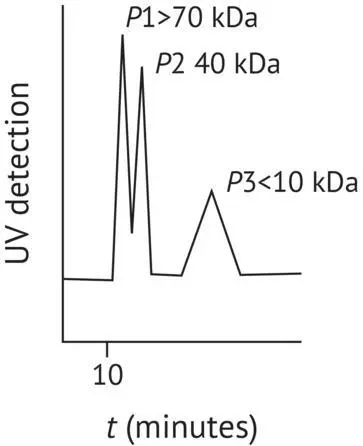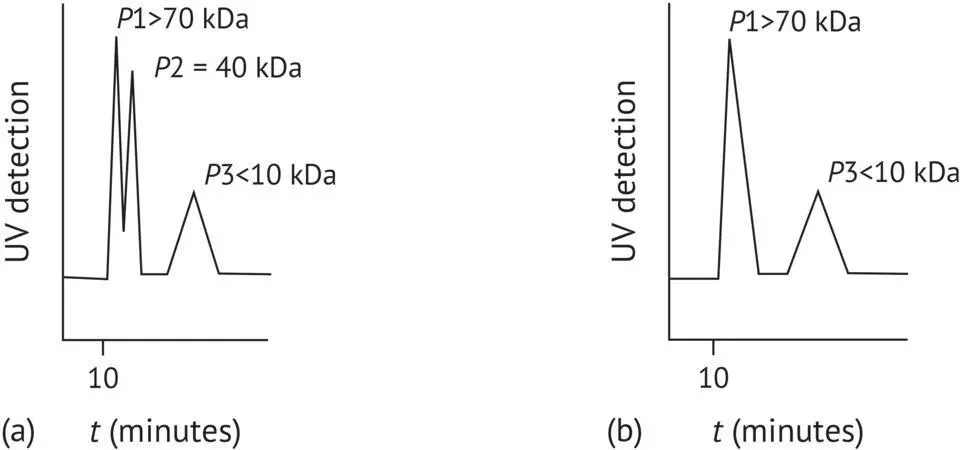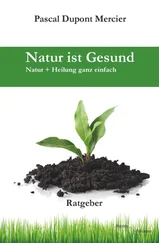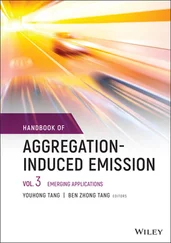Furthermore, the same phenomenon occurs in wine and is detrimental to the treatment's effectiveness. Ribéreau‐Gayon et al . (1977) demonstrated that stability in terms of tartrate precipitations may be considered effective for the following lengths of time, depending on temperature:
Several years at 0°C.
Over two years at 10–12°C.
One year to 18 months at temperatures varying between 10°C in winter and 18°C in summer.
Three months at 20°C.
One month at 25°C.
One week at 30°C.
A few hours between 35 and 40°C.
At first glance, metatartaric acid instability accounts for surprising observations concerning wines treated in this way. One sample, stored at 0°C in a refrigerator, had no precipitation, while calcium tartrate precipitation occurred in another sample stored at 20–25°C when it was no longer protected due to hydrolysis of the metatartaric acid.
The conditions for using metatartaric acid depend on its properties. A concentrated solution, at 200 g/l, should be prepared in cold water at the time of use. As metatartaric acid is strongly hygroscopic, it must be stored in a dry place.
Metatartaric acid is added after fining, as there is a risk of partial elimination due to flocculation. It is particularly affected by bentonite and potassium ferrocyanide treatments. Although there was some cause for concern that high‐temperature bottling would reduce the effectiveness of metatartaric acid, in fact, under the actual conditions of use, this bottling technique has little or no negative impact (Section 12.2.4). Incidentally, a slight opalescence may be observed after a wine has been treated, especially when the most efficient products, with high esterification numbers, have been used. It is therefore recommended that metatartaric acid be added before the final clarification.
1.7.7 Using Yeast Mannoproteins
It is well known that wine, especially red wine, naturally contains macromolecules that act as protective colloids (Section 9.4.2). At concentrations present in wine, these substances tend to hinder tartrate crystallization, but do not completely inhibit it (Section 3.6.5). Little research has been done into isolating these crystallization inhibitors in wine and making use of their stabilizing properties. On the contrary, for many years, major efforts were made to eliminate these colloids, by drastic fining and filtration, as they reduce the effectiveness of physical stabilization treatments, especially cold stabilization.
It is known, however, that the traditional practice of barrel‐aging white wines on yeast lees for several months often gives them a high level of tartrate stability, so cold stabilization is unnecessary (Section 5.6.4). Although, in practice, this phenomenon is very widespread, very little mention of it has been made until now in enology theory. Thus, in Bordeaux, most dry white wines aged on the lees are not stable in March after their first winter but become stable by June or July without any further treatment. When the same wines are not aged on the lees, they must be systematically cold stabilized to protect them from tartrate crystallization. As it was known that white wines are enriched with mannoproteins released by the yeast during lees aging, it was reasonable to suppose that these macromolecules contributed to the tartrate stabilization of wine.
Yeast mannoproteins were first found to have a certain inhibiting effect on tartrate crystallization in a model medium by Lubbers et al . (1993). However, these experiments used mannoproteins extracted by heat in alkaline buffers, under very different conditions from those accompanying the spontaneous enzymatic release of mannoproteins during lees aging. Furthermore, the effectiveness of mannoproteins extracted by physical processes in preventing tartrate precipitation has not been established in most wines, despite demonstrations in a model medium.
The discovery of the crystallization‐inhibiting effect of mannoproteins extracted by the enzymatic treatment of yeast walls (Dubourdieu and Moine‐Ledoux, 1994) adds a new dimension to this subject. The mannoprotein preparations are obtained by digesting yeast walls with an industrial preparation of β ‐(1,3)‐ and β ‐(1,6)‐glucanases (Glucanex™), authorized in winemaking as a clarifying enzyme to improve filterability of wines made from botrytized grapes (Sections 3.7.2 and 11.5.2). These preparations inhibit tartrate crystallization in white, red, and rosé wines, whereas the same dose (25 g/hl) of heat‐extracted mannoproteins does not have this stabilizing effect (Moine‐Ledoux and Dubourdieu, 1995).
The inhibiting effect of mannoproteins extracted from yeast on tartrate crystallization is not due to compound MP32, the invertase fragment responsible for protein stabilization in wine (Section 5.6.4) (Dubourdieu and Moine‐Ledoux, 1996). The mannoproteins in question are more highly glycosylated, with an average molecular weight of approximately 40 kDa. They have been purified (Moine‐Ledoux et al ., 1997) from the same mannoprotein preparations obtained by the enzymatic treatment of yeast walls.
Furthermore, it has been demonstrated that these mannoproteins are covalently bonded with glucan (Moine‐Ledoux and Dubourdieu, 1999). They remain in the cell walls treated simultaneously with sodium dodecyl sulfate (SDS) (which cuts the hydrogen bonds) and β ‐mercaptoethanol (which breaks SH bonds) ( Figure 1.21). These two treatments do not affect glycosidic bonds.
The presence of peak 2, corresponding to elution of the mannoprotein responsible for tartrate stabilization, confirms that the bond is covalent. Some of the mannoproteins that share covalent bonds with glucan also have a special type of glycosylation, leading to a glycosylphosphatidylinositol (GPI) anchor. The use of a mutant strain (FBYII), deficient in GPI‐anchored mannoproteins when cultured at 37°C (FBYII‐37), showed that the mannoproteins responsible for tartrate stabilization had this type of glycosylation. Two types of mannoprotein extracts were obtained by enzyme hydrolysis of yeast cell walls (FBYII), cultured at 24°C or 37°C.

FIGURE 1.21 HPLC analysis of molecular‐sieved mannoprotein extract obtained by enzyme digestion of cell walls treated simultaneously with SDS and β ‐mercaptoethanol.
HPLC analysis of these two extracts ( Figure 1.22) showed that peak 2 was absent when the cell walls came from yeast cultured at 37°C, i.e. deficient in GPI‐anchored mannoproteins. These results (1) show that the mannoproteins responsible for tartrate stabilization are GPI‐anchored and (2) explain why they are only extractible by enzymatic digestion.

FIGURE 1.22 HPLC analysis of molecular‐sieved mannoprotein extract obtained by enzyme digestion of (a) FBYII‐24 and (b) FBYII‐37 yeast cell walls, cultured at 24 and 37°C, respectively.
An industrial preparation (Mannostab™) has been purified from yeast cell wall mannoprotein. It is a perfectly soluble, odorless, flavorless, white powder. This product has been quite effective ( Table 1.20) in preventing tartrate precipitation in white wine samples taken before the normal cold stabilization prior to bottling. Initial results show that Mannostab inhibits potassium bitartrate crystallization at doses between 15 and 25 g/hl. However, in certain wines in Table 1.20(1996 white Bordeaux and 1996 white Graves), larger quantities apparently reduced the stabilizing effect. A similar phenomenon has been reported with a protective colloid used to prevent protein precipitation (Pellerin et al ., 1994). The dose of Mannostab necessary to stabilize a wine must be determined by preliminary testing. It is very clear that the use of excess amounts of this additive is ineffective.
Читать дальше














